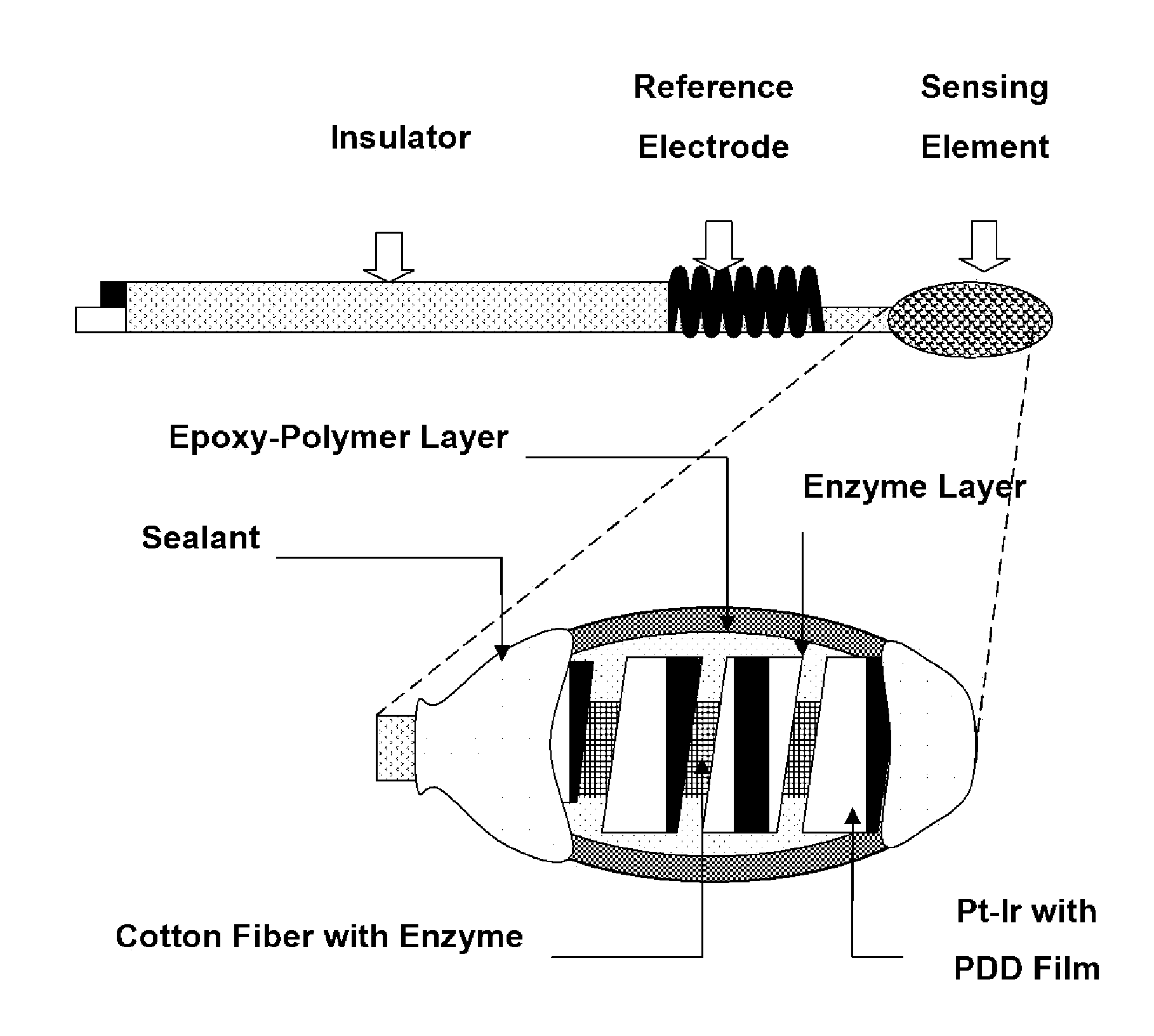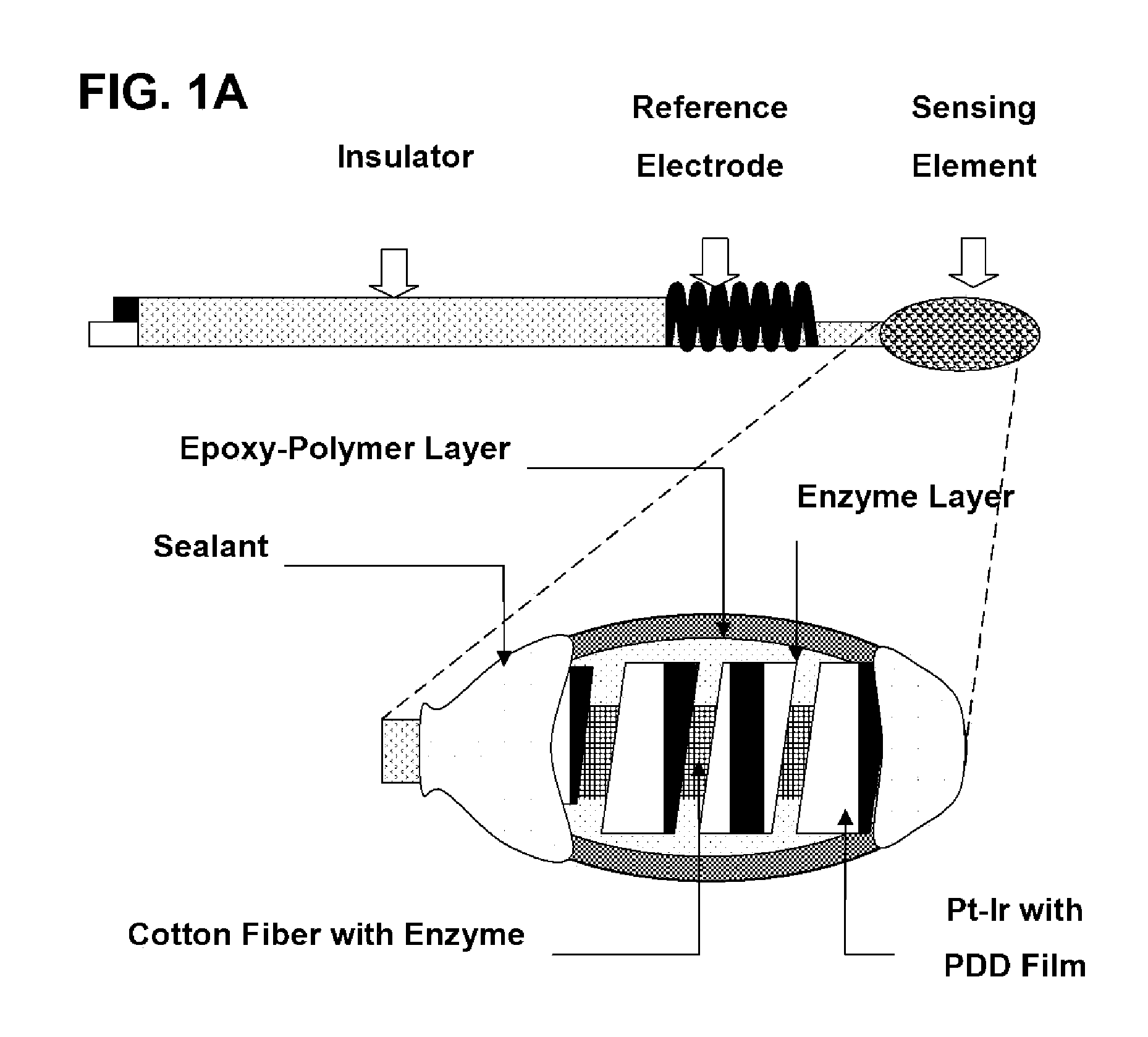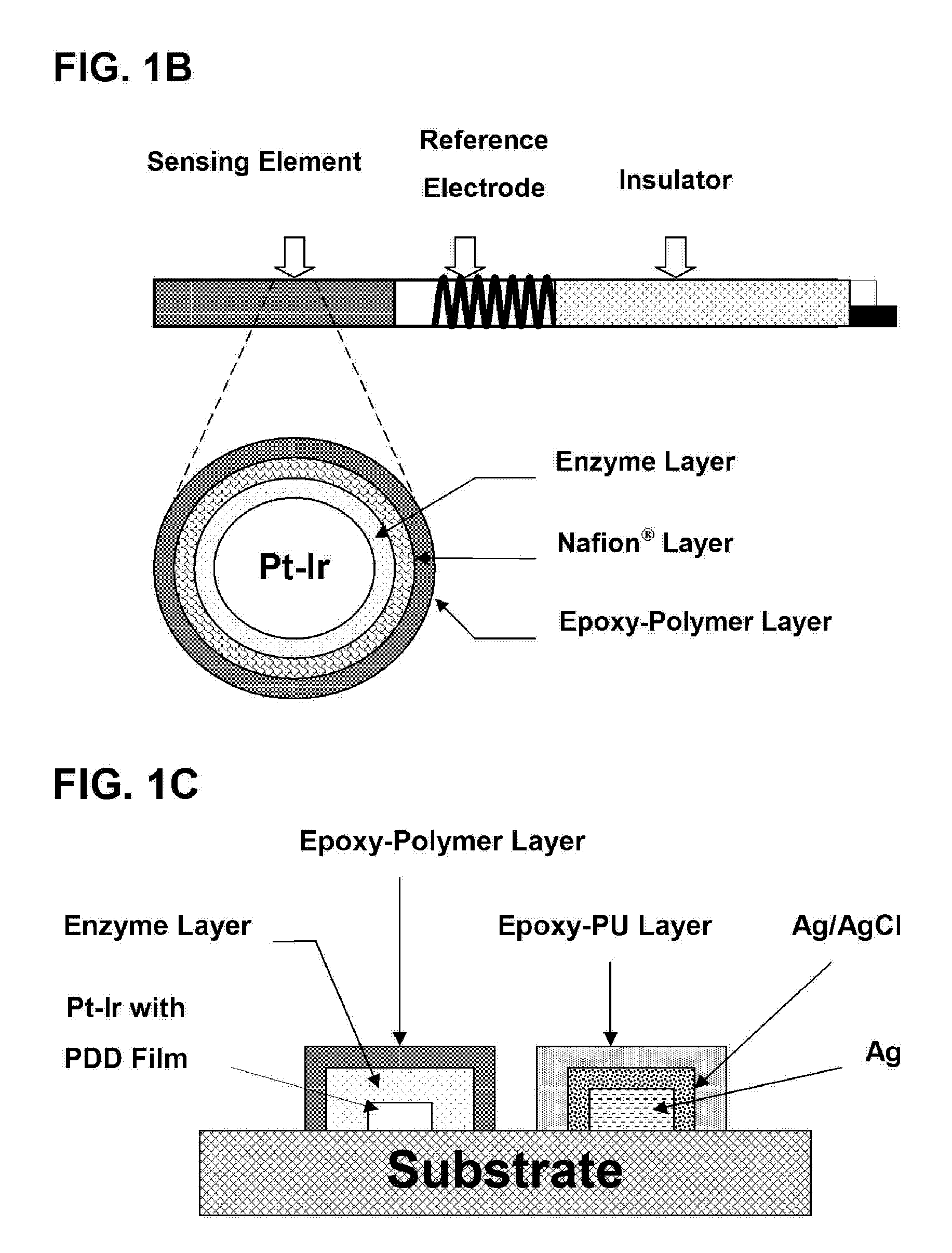Epoxy Enhanced Polymer Membrane to Increase Durability of Biosensors
a biosensor and polymer technology, applied in the field of enzyme biosensors, can solve the problems of difficult problems, inability to replace the sensing element in miniaturized biosensors, and the use of biosensors, and achieve the effect of increasing the in vivo durability of biosensors
- Summary
- Abstract
- Description
- Claims
- Application Information
AI Technical Summary
Benefits of technology
Problems solved by technology
Method used
Image
Examples
Embodiment Construction
[0052] Referring to FIG. 1, there are shown three kinds of possible biosensors, which may utilize the sensing element of the present invention. It is to be understood that the invention is not limited to these precise forms of biosensors, and that different biosensor constructs and methods may be used therein without departing from the scope of the invention.
[0053] An advantageous biosensor is designed according to electrochemistry principles and composed of a sensing element based on a conductor which may be platinum, gold, graphite or the like and a reference electrode based on silver, silver / silver chloride (Ag / AgCl) or the like. On the conductor, the sensing element containing at least one immobilized enzyme layer and one epoxy-enhanced polymer is formed by using coating, spreading, screen-printing and other adequate thin film techniques. Furthermore, the sensing element preferably has one internal interference-eliminating layer that is preferably formed by electrochemical poly...
PUM
| Property | Measurement | Unit |
|---|---|---|
| Temperature | aaaaa | aaaaa |
| Fraction | aaaaa | aaaaa |
| Fraction | aaaaa | aaaaa |
Abstract
Description
Claims
Application Information
 Login to View More
Login to View More - R&D
- Intellectual Property
- Life Sciences
- Materials
- Tech Scout
- Unparalleled Data Quality
- Higher Quality Content
- 60% Fewer Hallucinations
Browse by: Latest US Patents, China's latest patents, Technical Efficacy Thesaurus, Application Domain, Technology Topic, Popular Technical Reports.
© 2025 PatSnap. All rights reserved.Legal|Privacy policy|Modern Slavery Act Transparency Statement|Sitemap|About US| Contact US: help@patsnap.com



